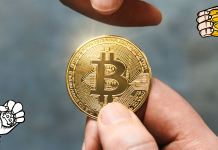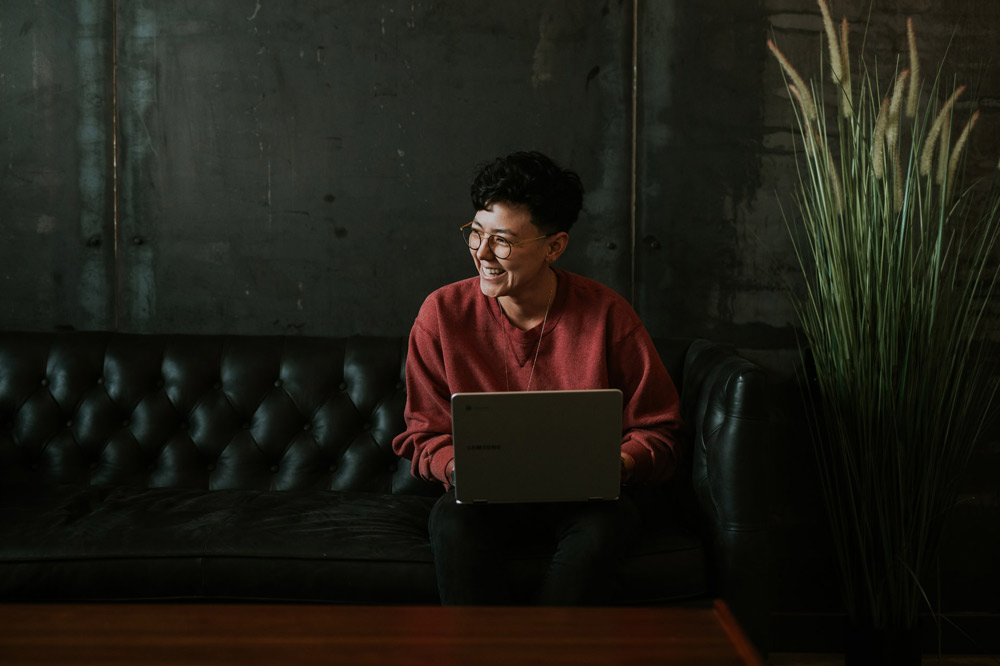For crypto traders interested in the DeFi space, a term that might frequently be popping up is collateralised debt position or CDP. It’s one of MakerDAO’s popular products currently running prominently in the market.
Throughout this article, we will look at CDP’s meaning, how this loan position works, and its benefits for traders and investors.
CDP Meaning
A CDP is a loan taken out in DAI on the MakerDAO platform, using a smart contract backed by ETH as collateral. In essence, a person can offer up ETH or any crypto assets that are accepted by the platform in the future as collateral to generate DAI stablecoin.
The DAI generated as a result of the transaction can be used for many things, including buying more cryptocurrency, trading for fiat currency, gaming, bitcoin gambling, or other transactions related to crypto.
How Does The Loan Work
Anyone taking out a CDP can generate DAI up to the value of two-thirds of their deposited collateral. In other words, this means that the total amount of DAI that can be generated is the total collateral amount divided by 1.50.
Total ETH collateral amount / 1.50 = Total/maximum DAI generated
DAI is pegged to the USD, and 1 DAI = 1 USD.

Use Case Example
- Lock up 1 ETH into the CDP vault. At the time, the ETH is valued at 100 USD
- This means the person can generate 66 DAI to withdraw and use as required, for example, at a BTC casino.
So, 1 DAI has at least $1.50 worth of Ether (ETH) lodged in a CDP as collateral.
If the value of the collateral takes a downturn, a user must either lock in more ETH, make a payment towards their debt, or face the risk of liquidating their smart contract.
If it gets to the point when liquidation occurs, the collateral (ETH) is automatically sold to cover the debt. Moreover, the account holder will also be liable to pay a penalty fee for failing to keep their collateral ratio above 150%.
Any remaining collateral is paid out to the account holder subject to a liquidation fee.
Repaying The Loan
Generating the stablecoin makes the person liable for the debt on their CDP account.
The debt can be settled to gain access to the collateral once again in one of two ways either by:
- Repaying it in full, or
- On a pro-rata basis
Any repayments are made in DAI, allowing users access to their ETH once again.
Reneging on the contract causes it to be liquidated.
CDP account holders are liable to pay annual interest in DAI on their debts, referred to as the stability fee. This is for generating the stablecoin and closing accounts.
MKR token holders use a voting system to determine what the fee is. Fees are then put towards buying back and burning MKR from the market to limit supply and prevent overinflation of DAI.
Why Should I Open A Loan Contract?
The main reason why users open up a CDP is to get instant liquidity without selling their ETH.
For this to be possible, you must be willing to accept the risk of liquidation. You must be firm in your belief that returns from staying invested in ETH or returns produced from utilising borrowed crypto assets will outperform the eventual borrowing costs.
Due to its dependability, DAI has also become the go-to stablecoin for decentralised exchanges. Whereas the price of ETH may fluctuate, DAI is pegged to the United States Dollar, as we had previously mentioned, so users can rely on it to be relatively stable.
Because of its stability, there is a great demand for DAI to facilitate payments, commerce, gaming, lending, and many other cases.

Do Your Research
When considering opening a CDP, a typical approach should be:
- Research the current CDP stability fee and then use historical data to form a projection of future stability fees.
- Estimate the time frame that you will need to borrow DAI for
- Consider whether remaining invested in ETH and the Return on Investment generated from borrowed resources will trump accrued stability fees.
Those who use ETH for collateral must be aware that:
- If the stability fee rises above what was initially projected, be prepared for the interest payments to be higher than initially expected.
- Should the existing collateral value (locked ETH x Current ETH price) dip below the 150% threshold of the borrowed DAI amount at any time during the following three months, the user’s locked ETH will be liquidated.
Always observe your collateralisation level after you request a loan and ensure that your locked ETH balance is topped up if it sneaks closer to liquidation.
What To Do With Generated DAI
1. Transact With It As A Currency
Similar to any other stablecoin, DAI can be used as a currency.
Many online vendors, apps, or institutions worldwide accept it as payment for goods or services provided that the value of ETH doesn’t unexpectedly dip. Since there are no deadlines for CDP debts to be settled, the crypto can be drawn upon, for example, to pay rent or buy tech online, without having to covert ETH.
2. Invest In More Cryptoassets
Many people use their DAI stablecoin to invest in other crypto assets.
Another common tactic is to use the generated DAI to buy more ETH to place in the loan contract.
Of course, this is fine as long as the value of ETH is on the rise. Should it crash, though, the repercussions are losing collateral and paying more into the contract.
3. Save or Lend DAI To Earn Interest
Some platforms, including MakerDAO’s DAI Savings Rate (DRS) tool, allow users to lock in their currency and earn interest.
Generally, the interest rates in decentralised finance are attractive to the lender, making them an ideal investment opportunity.
Advantages Of Having A Collateralised Debt Position
MakerDAO developed CDPs to make life easier and more secure for users within a financial space. Having one can produce many incredible advantages, including:
No Credit History Requirements

This works to the advantage of those who have suffered from bad credit. Having a CDP provides a secure and efficient platform to access funds for users who have difficulty accessing funds through financial institutions, such as banks.
Also, the need for cumbersome paperwork is eliminated when using CDP, as opposed to protocols followed through traditional banking systems. All this is possible through an Ethereum address that a user possesses.
Flexible Payments
With a CDP, users are not constrained by time limits, minimum repayment schedules, or shift term-based rates often associated with traditional lending systems. The account holder is free to draw DAI or add extra collateral as the need arises.
Low Fees
Fewer intermediaries are involved, and lower operational overheads as transactions are facilitated on the Ethereum blockchain. This lowers the cost of operations, which, in turn, reduces the amount charged by MakerDAO.
No Counterparty Risk
Since CDP is on a decentralised system, users are not reliant on a trusted counterparty institution to manage or release their funds while knowing that all their records are public and secure.
How Do I Open A CDP?
It is relatively easy to open a CDP. MakerDAO developed the first user interface to assist end-users with opening these smart contracts.
To open one, follow these steps:
- Visit the MakerDAO CDP portal.
- Link up with a Metamask, a hardware wallet, or a coin base wallet with ETH that you will use to collateralise your loan.
- Go to the OPEN CDP section and specify how much ETH you wish to lock up and the value of DAI that you want to generate against that ETH. You may notice that your liquidation price grows as you increase the DAI to be generated. Usually, any value under a 200% collateralisation ratio is deemed at risk, so it is important to pay attention to the liquidation price and collateralise sufficient ETH.
- Go to the COLLATERALISE & GENERATE DAI section and confirm your loan details.
- You may then conclude that by selecting FINALISE to send the transaction. Once the transaction is confirmed on Ethereum, you may observe your ETH locked in CDP, and DAI will subsequently appear in your wallet balance, similar to other ERC20 tokens.
- Always keep an eye on the price of ETH and its effect on your collateralisation ratio. You can always lower your liquidation risk by locking up more ETH in your CDP.

Closing Your Account Or Withdrawing Your Balance
You can visit the portal and the PAYBACK section when ready to pay back your debt.
You have the option of paying back the stability fee in DAI and also withdrawing your collateral. The beauty of the MakerDAO portal is that you can either close the CDP completely or leave it open if you ever need to borrow again at a later stage.
It is important to bear in mind that you will be liable for interest on any DAI you borrow.
Additionally, the only time you will have access to ETH locked up in your CDP is once your debt is paid off entirely.
You must be aware that if the price of ETH starts to drop, you may face liquidation if decisive action is not taken. It is highly recommended that you avoid borrowing the maximum amount possible and rather consider getting smaller loans with a reduced risk of liquidation.
How Do You Use The Account?
When a person plans to use CDP, they must first send a series of transactions to MakerDAO’s smart contracts and create a Collateralised Debt Position through the MakerDAO system.
After the CDP is created, the account holder must then deposit assets into the account. MakerDAO only accepts deposits in Ether that may be used as collateral, although more assets are in the pipeline.
The assets that are deposited are accepted and secured by the CDP. Users now have access to generate or borrow DAI as needed. As mentioned earlier, a successful loan request depends on the collateral value remaining at 150% of the DAI intended for the loan.
While the person is liable for the outstanding DAI debt, all collateral they own will remain locked and unavailable until that debt is cleared.
Interest and Fees
Users open CPDs knowing they will be liable for the interest when borrowing from MakerDAO’s platform. Should they wish to access additional funds in the future, they will need to pay back the original amount borrowed in DAI with an interest fee, known as the stability fee.
The stability fee is usually paid in the Maker token, MKR. When paying this stability fee, users do not possess such MKR tokens. Instead, the platform automatically purchases it for them to facilitate a more efficient payment process covertly.

Maintaining a Balance
Once the payment of the entire debt is complete, users have the option of leaving their CDP empty until they require an additional loan, or they can close it down entirely.
Always note that borrowing a greater amount may lead to liquidation, as Ethereum is known for its high volatility.
While the loan stage, a critical CDP function is to modify the total supply of outstanding DAI; furthermore, it creates DAI when a new asset is leveraged by a specific user and eliminates existing DAI once the user fully pays the loan. This succession of regulated minting and burning enables the smart contract to hold a detailed record of the total supply of the stablecoin.
The Bottom Line
A CDP is a convenient and secure manner to get an instant loan using ETH as collateral. However, consider the risks, and never open a CDP unless you know what you’re doing.
The greatest risks include liquidation due to falling prices of ETH and risks of higher than projected stability fee increases. The benefits of CDP far outweigh the cons and undoubtedly is a step in the right direction for decentralised finance.















